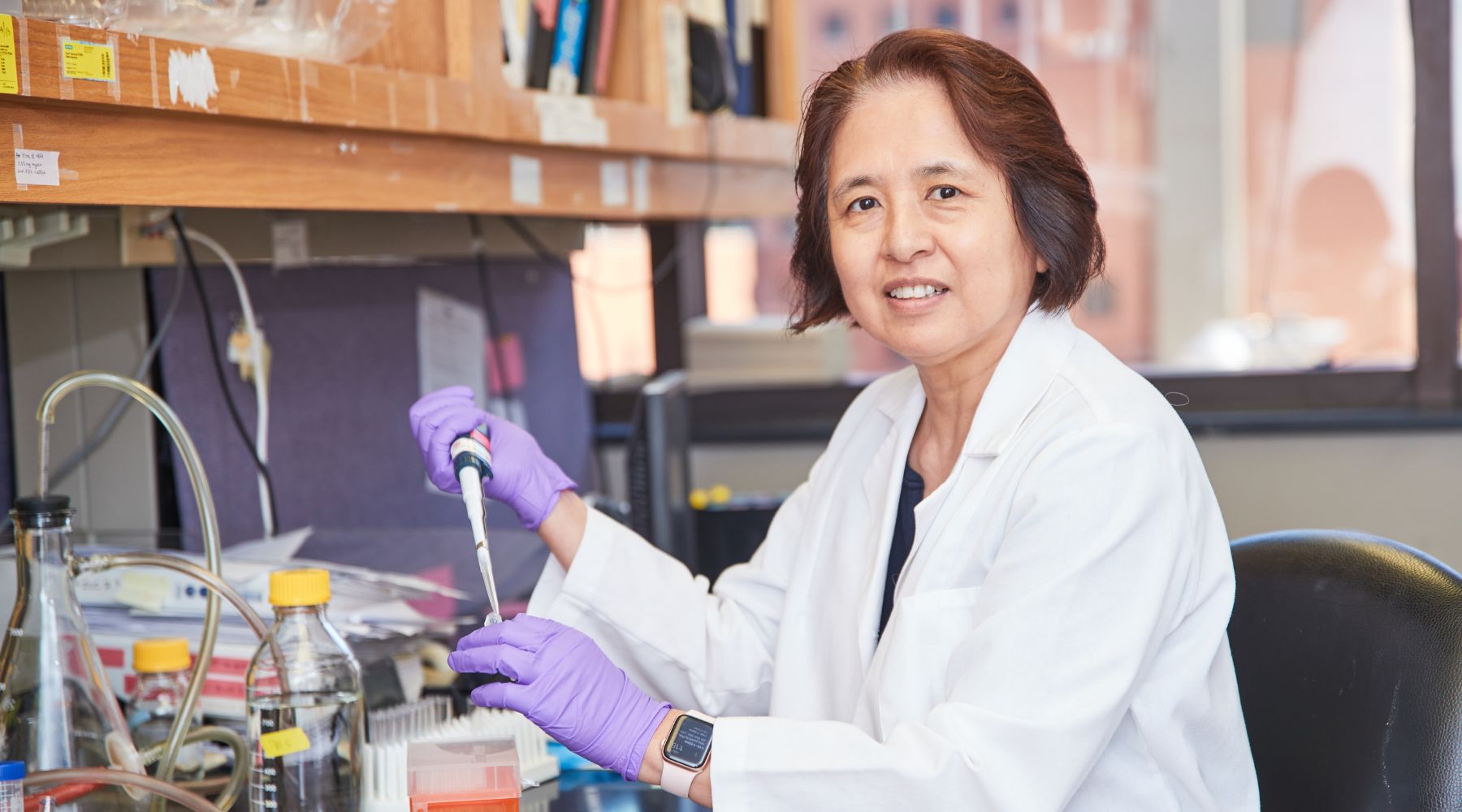Fifty years ago, immunologists were just beginning to understand a newly discovered type of white blood cell that would come to be known as the T cell. Decades of research have since shown these protective cells to be so crucial, we couldn’t survive without them.
Fast-forward to today, and research stands at a similar infancy with a closely related immune cell called innate lymphoid cells, or ILCs, says Oklahoma Medical Research Foundation scientist Xiao-Hong Sun, Ph.D.
The National Institutes of Health recently awarded Sun a $3.4 million grant to continue unraveling mysteries about these cells, including whether they may offer clues about the differences in immune reactions between children and adults.
“It’s far too soon to say whether we will someday discover ILCs play a role as profound as T cells,” said Sun, who holds the Lew and Myra Ward Chair in Biomedical Research at OMRF. “But I hope this research will begin to answer that question.”
Sun joined OMRF in 1999 and studied T cells until pivoting her research to ILCs when scientists discovered them about a decade ago.
Initially, researchers believed ILCs originated only in bone marrow. In 2019, Sun discovered the thymus, a gland near the heart, can also produce them. The thymus trains the immune system to distinguish friendly cells from invaders. It tends to shrink and become less active as we age.
“Our previous discovery was important because it may shed light on why immune reactions differ between children and adults,” Sun said. “Childhood onset of asthma and food allergies are just two examples. This new study may help explain the underlying causes and suggest new therapeutic approaches.”
“It took a half-century of painstaking work by scientists around the world to get to our current understanding of T cells,” said OMRF Executive Vice President & Chief Medical Officer Judith James, M.D., Ph.D. “That’s often how science works. Dr. Sun is applying similar approaches to understand ILCs in an accelerated way. I’m excited to see where her research leads.”
Sun’s grant, No. 1R01AI178947-01, was awarded by the National Institute of Allergy and Infectious Diseases, part of the NIH. Oklahoma City’s Presbyterian Health Foundation provided funding for Sun to collect preliminary data for this research.



